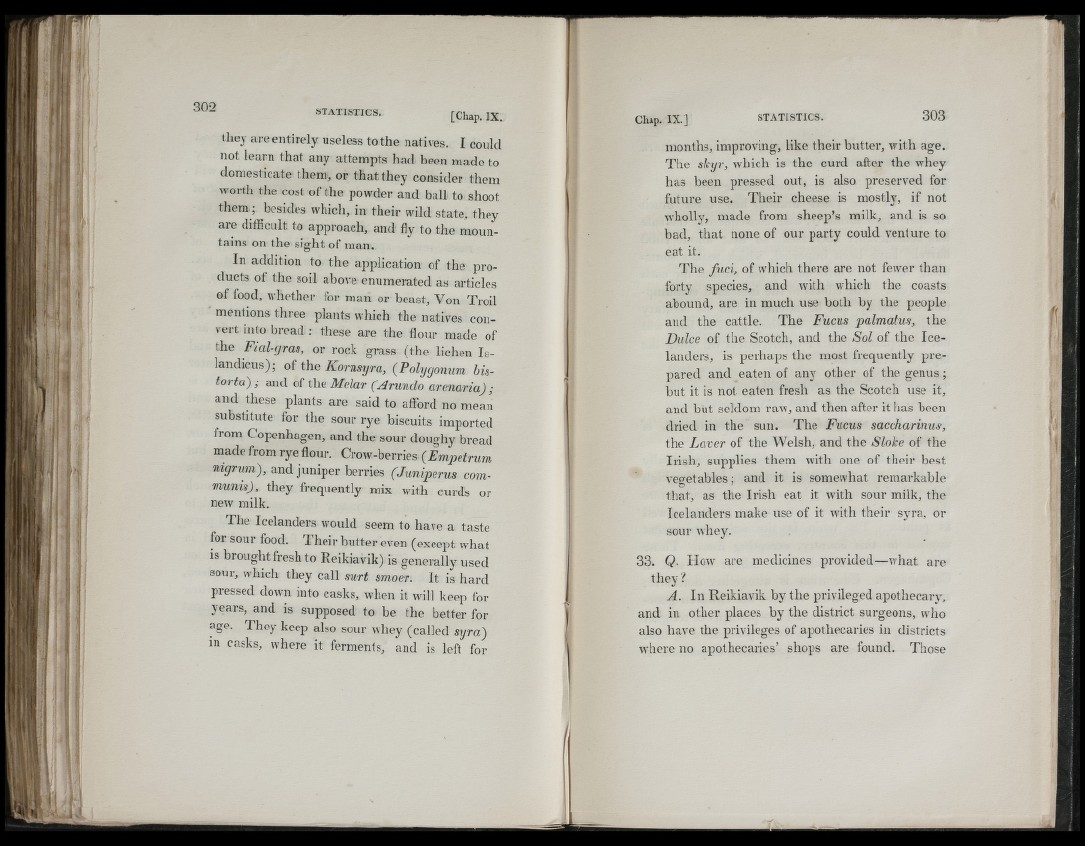
' -4=
i t I,
« m s
V l i s -I A«l' ■ i* '=
i n « Mi
R i = l
' , J 1 I'
they are entirely useless to the natives. I could
not learn that any attempts had been made to
domesticate them, or that they consider them
worth the cost of the powder and ball to shoot
th em ; besides which, in their wild state, they
are difficult to approach, and fly to the mountains
on the sight of man.
In addition to the application of the products
of the soil above enumerated as articles
of food, whether for man or beast. Von Troil
mentions three plants vvhich the natives convert
into bread ; these are the flour made of
the Fial-cjras, or rock grass (the lichen Islandicus);
of ihe Kornsyra, {Polygonum bistort
a) ; and of the Melar (Arundo arenaria) ;
and diese plants are said to afford no mean
substitute for the sour rye biscuits imported
from Copenhagen, and the sour doughy bread
made from rye flour. Crow-berries {Empetrum
nigrum), and juniper berries (Juniperus communis),
they frequently mix with curds or
new milk.
The Icelanders would seem to have a taste
tor sour food. Their butter even (except what
IS brought fresh to Reikiavik) is generally used
sour, which they call surt smoer. I t is hard
pressed down into casks, when it will keep for
years, and is supposed to be the better for
age. They keep also sour whey (called syra)
m casks, where it ferments, and is left for
months, improving, like their butter, with age.
The skyr, which is the curd after the whey
has been pressed out, is also preserved for
future use. Their cheese is mostly, if not
wholly, made from sheep’s milk, and is so
bad, that none of our party could venture to
eat it.
The fuci, of which there are not fewer than
forty species, and with which the coasts
abound, are in much use both by the people
and the cattle. The Fucus palmatus, the
Dulce of the Scotch, and the Sol of the Icelanders,
is perhaps the most frequently prepared
and eaten of any other of the genus;
but it is not eaten fresh as the Scotch use it,
and hut seldom raw, and then after it has been
dried in the sun. The Fucus saccharinus,
the Laver of the Welsh, and the Sloke of the
Irish, supplies them with one of their best
vegetables; and it is somewhat remarkable
that, as the Irish eat it with sour milk, the
Icelanders make use of it with their syra, or
sour whey.
33. Q. How are medicines provided—what are
they ?
A . In Reikiavik by the privileged apothecary,
and in other places by the district surgeons, who
also have the privileges of apothecaries in districts
where no apothecaries’ shops are found. Those
iii